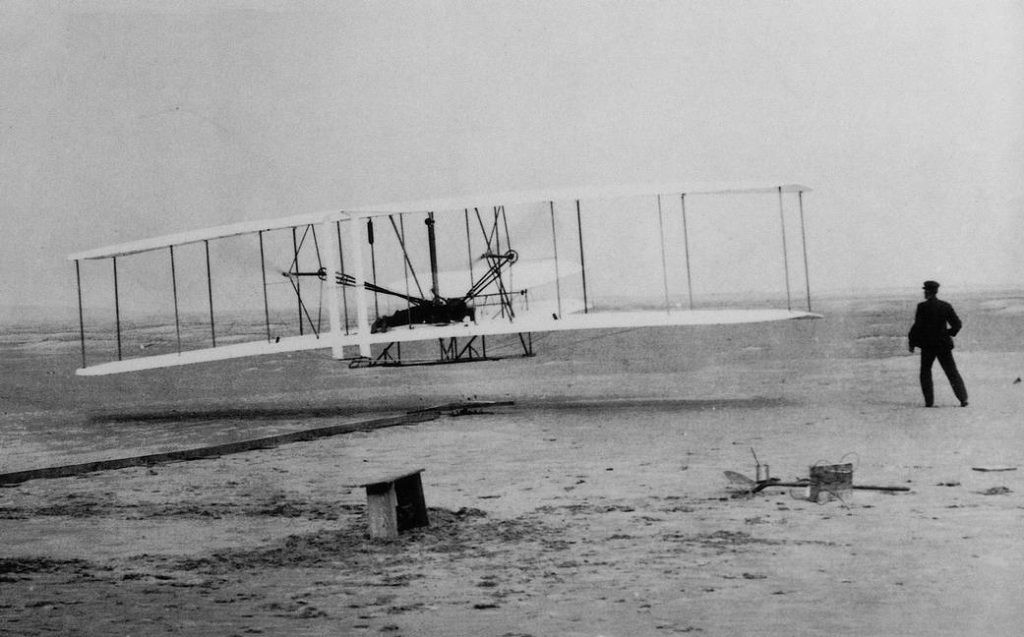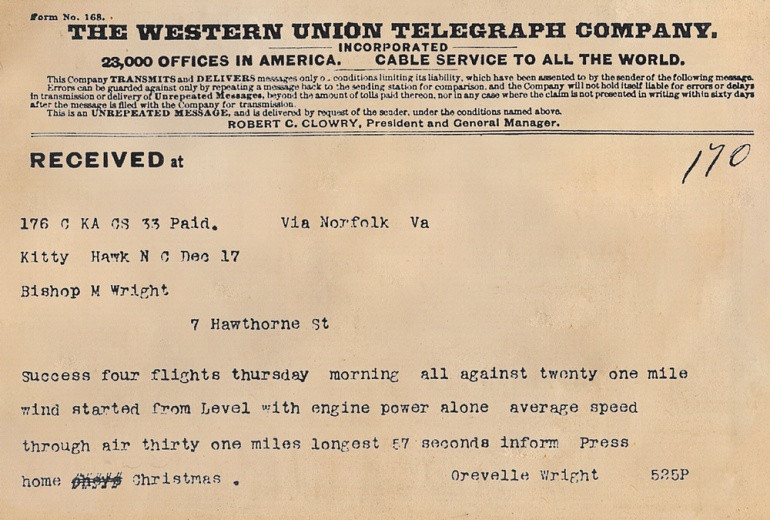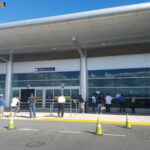On December 17, 1903, history took to the skies above the sandy dunes of Kitty Hawk, North Carolina. This pivotal date marks the answer to the question, “When Did Wright Brothers Fly?” It was on this day that Wilbur and Orville Wright, two brothers from Ohio, achieved what was once considered an impossible dream: sustained, controlled, powered flight in a heavier-than-air machine. Their invention, the Wright Flyer, successfully soared, albeit briefly, ushering in the age of aviation and forever changing the course of human history.
The first flight of that historic day lasted a mere 12 seconds and covered a distance of 180 feet. While seemingly short by today’s standards, this initial success was monumental. It unequivocally demonstrated that human flight was not just a fantasy but a tangible reality. The Wright brothers didn’t stop there; they took to the air three more times that day, each flight pushing the boundaries further. The final and longest flight of December 17th saw Orville Wright piloting the Flyer for 59 seconds, covering an impressive 852 feet. These four flights collectively represent the birth of aviation, answering definitively the question of when the Wright brothers first flew.
 The Wright Flyer Airborne
The Wright Flyer Airborne
However, the celebration was short-lived. After the fourth successful flight, a gust of wind caught the parked Kitty Hawk Flyer, flipping it over and causing significant damage. The aircraft that had just made history would never fly again. Despite this unfortunate incident, the Wright brothers understood the magnitude of their accomplishment. They had unlocked the secrets of powered flight, paving the way for rapid advancements in aviation technology.
The impact of that single day in Kitty Hawk is immeasurable. Just sixty-six years later, humanity took another giant leap, landing on the moon. This incredible progress, from the first tentative seconds in the air to lunar footsteps, underscores the profound legacy of the Wright brothers. Within a century of their groundbreaking flights, we witnessed the development of fighter jets, commercial airliners, and reusable space shuttles, all stemming from the seeds of innovation sown on that windy December day in 1903.
Orville and Wilbur Wright were more than just inventors; they were pioneers who dared to challenge conventional wisdom and push the boundaries of what was deemed possible. Their relentless pursuit of flight, fueled by curiosity and ingenuity, has left an indelible mark on the world. To truly appreciate their achievement in answering “when did Wright brothers fly?”, it’s fascinating to delve into some lesser-known facts surrounding their journey to the skies:
-
From Print to Propellers: Before their aviation exploits, the Wright brothers were entrepreneurs in the printing and bicycle industries. They owned a local newspaper, the West Side News, with Wilbur as editor and Orville as publisher. This venture was followed by a successful bicycle repair shop, where they also designed and sold their own bicycle models. Their mechanical aptitude developed in these businesses proved invaluable in their later aeronautical endeavors.
-
Inspired by a Toy: The spark of interest in flight was ignited in their childhood by a simple toy helicopter. Their father, Milton Wright, brought home a rubber band-powered model helicopter from a trip in 1878. This toy, based on the designs of French aviation pioneer Alphonse Pénaud, fascinated the brothers and sowed the seeds of their lifelong passion for flight. Pénaud’s earlier invention, the Planophore model airplane of 1871, was the first aerodynamically stable flying model, further highlighting the lineage of inspiration behind the Wrights’ work.
-
Kitty Hawk’s Windy Advantage: The Wright brothers meticulously selected Kitty Hawk, North Carolina, as their testing ground because of its consistently strong winds. They had already conducted over 700 glider flights there in 1902, leveraging the wind to aid their experiments. The steady winds and soft sandy terrain offered ideal conditions for both launching and, crucially, for minimizing damage during landings and crashes, which were an inevitable part of their learning process.
-
Building Their Own Powerplant: The engine that propelled the Wright Flyer was a testament to their ingenuity and hands-on approach. This custom-built engine, producing 12 horsepower, was a critical component of their success. While steam engines had been around since 1698, and internal combustion engines were evolving, the Wrights needed a lightweight yet powerful engine specifically for their aircraft. Working with mechanic Charlie Taylor, they designed and built an aluminum alloy engine at Buckeye Iron and Brass Works. Remarkably, this engine lacked a throttle and ran at full speed, with camshaft timing adjustments for control. It powered all four flights on December 17th before being damaged in the wind incident.
-
Unexpected Weight, Unexpected Thrust: The Kitty Hawk Flyer ended up being heavier than initially calculated, weighing 125 pounds more than anticipated. However, this setback was fortuitously offset by the propellers exceeding expectations, generating 50 percent more thrust than projected. This unexpected boost in performance was crucial to overcoming the weight increase and achieving successful flight.
-
Coin Toss and a Damaged First Attempt: Days before their celebrated success, on December 14, 1903, the Wrights made a prior flight attempt. Wilbur won a coin toss to pilot the first attempt. Unfortunately, the Flyer was only airborne for 3.5 seconds before crashing into the sand, sustaining minor damage. After repairs, Orville was at the controls for the officially recognized “first flight” on December 17th, making Wilbur’s coin toss victory a slightly ironic twist in the narrative of “when did Wright brothers fly?”.
-
Silent Skies, Initially: Surprisingly, the groundbreaking first flight received minimal media attention. Despite notifying the press, only one local journal covered the event. Many journalists were skeptical of the brothers’ claims, highlighting the challenge of convincing the world of such a revolutionary achievement before widespread photographic and video evidence.
-
Telegraphic Misspellings and Misinformation: In their excitement, the Wright brothers sent a telegraph to their father immediately after their successful flights. This message, now a historical artifact, misspelled Orville’s name and incorrectly stated the flight duration as 57 seconds instead of 59. These minor errors in the initial communication further illustrate the raw, immediate, and somewhat unbelievable nature of their achievement at the dawn of aviation.
 Telegraph sent by the Wright brothers to their father.
Telegraph sent by the Wright brothers to their father.
In conclusion, the answer to “when did Wright brothers fly?” is unequivocally December 17, 1903. This date represents not just a single event, but the culmination of years of research, experimentation, and unwavering determination. The Wright brothers’ flights at Kitty Hawk were the first tentative wingbeats of a new era, an era where the sky was no longer the limit, but the starting point. Their legacy continues to inspire innovation and reminds us that even the most audacious dreams can take flight with perseverance and ingenuity.

